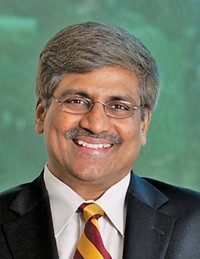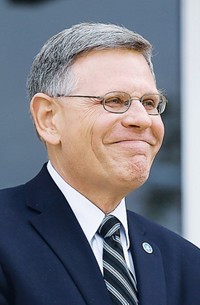Advertisement
Grab your lab coat. Let's get started
Welcome!
Welcome!
Create an account below to get 6 C&EN articles per month, receive newsletters and more - all free.
It seems this is your first time logging in online. Please enter the following information to continue.
As an ACS member you automatically get access to this site. All we need is few more details to create your reading experience.
Not you? Sign in with a different account.
Not you? Sign in with a different account.
ERROR 1
ERROR 1
ERROR 2
ERROR 2
ERROR 2
ERROR 2
ERROR 2
Password and Confirm password must match.
If you have an ACS member number, please enter it here so we can link this account to your membership. (optional)
ERROR 2
ACS values your privacy. By submitting your information, you are gaining access to C&EN and subscribing to our weekly newsletter. We use the information you provide to make your reading experience better, and we will never sell your data to third party members.
Education
New Personnel At Science Foundation
Appointments: MIT’s Subra Suresh nominated to lead agency; new Chemistry Division head named
by Susan R. Morrissey
June 14, 2010
| A version of this story appeared in
Volume 88, Issue 24
Within a 24-hour period in early June, the White House released its pick to direct the National Science Foundation and the agency announced the next head of the NSF Chemistry Division. Subra Suresh has been nominated to fill the top job, and Matthew S. Platz has been appointed to lead the Chemistry Division.
Suresh, currently dean of the School of Engineering and professor of engineering at Massachusetts Institute of Technology, will fill the vacancy left when Arden L. Bement Jr. stepped down as head of NSF at the end of May after a six-year term. Bement is now the director of Purdue University’s new Global Policy Research Institute.
“I am proud that such experienced and committed individuals have agreed to take on these important roles in my Administration,” President Barack Obama said in a statement about several nominations to government posts, including Suresh’s.
A mechanical engineer, Suresh conducts research on materials, nanotechnology, and red blood cells and their nanobiomechanical properties that impact various diseases. He earned a bachelor’s degree from the Indian Institute of Technology, Madras, in 1977; a master’s degree from Iowa State University in 1979; and a doctorate from MIT in 1981. He joined MIT as a professor in 1993 and has served as dean since 1997.
“Through his invigorating leadership, Dean Suresh has led MIT’s School of Engineering while pursuing his own remarkable research portfolio at the intersection of the life sciences and engineering,” MIT Provost L. Rafael Reif said in a statement. “In keeping with MIT’s long tradition of national service, he will bring this same breadth of knowledge and vision” to NSF.
The Senate must now confirm Suresh before he can take the reins of the nearly $7 billion-per-year agency.
NSF’s Chemistry Division is also preparing for its new director. Platz, a chemistry professor and dean of Natural & Mathematical Sciences at Ohio State University (OSU), will assume this role in October. His post does not require Senate confirmation.
A physical chemist, Platz researches the structure and behavior of reactive intermediates, particularly carbenes, nitrenes, and reactive oxygen species. He has served as department chair and vice provost at the university. He will continue his research at OSU while at NSF.
Platz will fill the vacancy left by Luis Echegoyen, who will depart the agency in mid-August. “Matt is an excellent choice for the division director position since he is a seasoned scientist with extensive administrative experience at Ohio State,” says Echegoyen, who, after completing a four-year term, is leaving the agency to become the Welch Chair in Chemistry at the University of Texas, El Paso. “I am sure that the chemistry division will continue to be a leader within NSF under his capable leadership.”
As Platz prepares for his new position, he’s not planning any major changes. “Luis Echegoyen was an extremely successful division director. He leaves behind an enviable record of achievement, which includes a visionary reorganization and tireless outreach, through town meetings and ‘Dear Colleague’ letters,” Platz tells C&EN. “My goal is to build on this legacy and continue this positive momentum.”
Both Suresh and Platz assume leadership roles at NSF at a challenging time. The agency will be coming off a one-time $3 billion influx of stimulus money, which many observers believe will lead to tough times for research funding. On the other hand, the agency is several years into a decadal budget doubling set to conclude in 2017. Balancing these two factors will undoubtedly be their top priority.







Join the conversation
Contact the reporter
Submit a Letter to the Editor for publication
Engage with us on Twitter